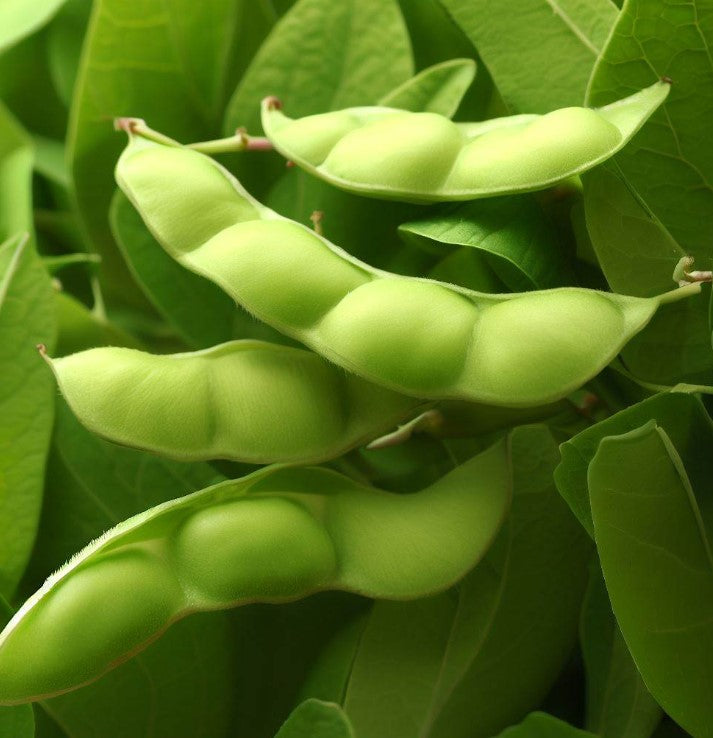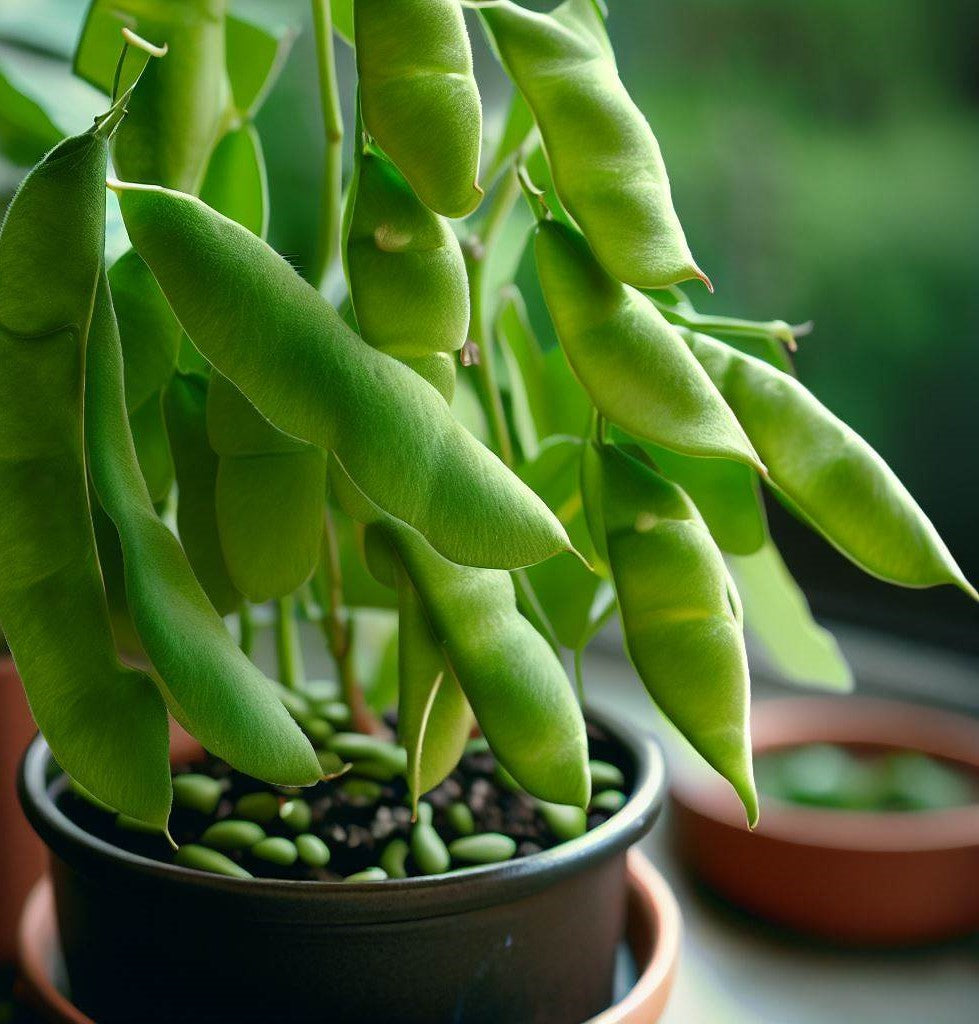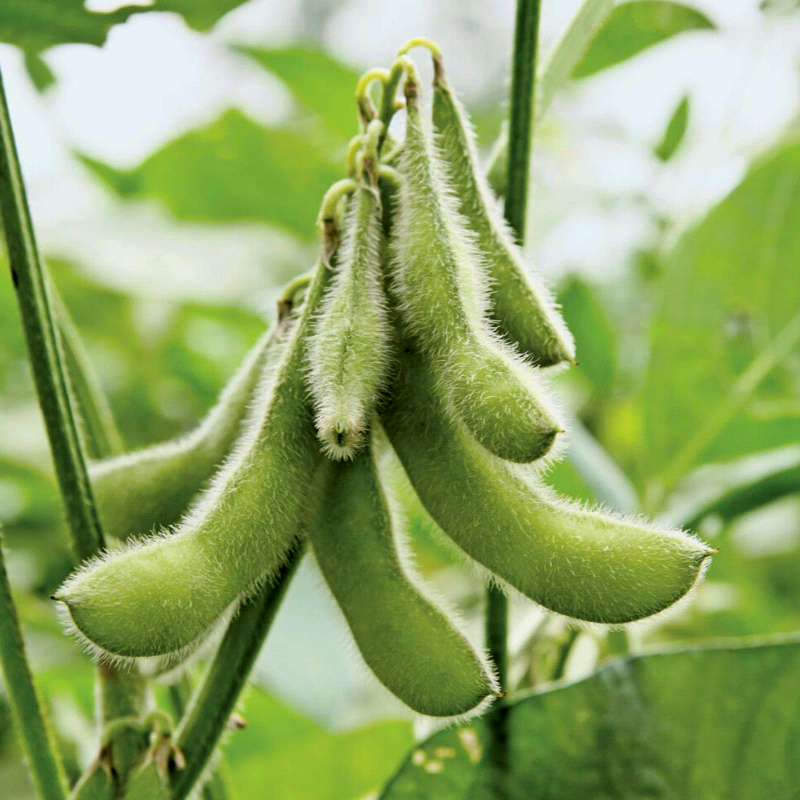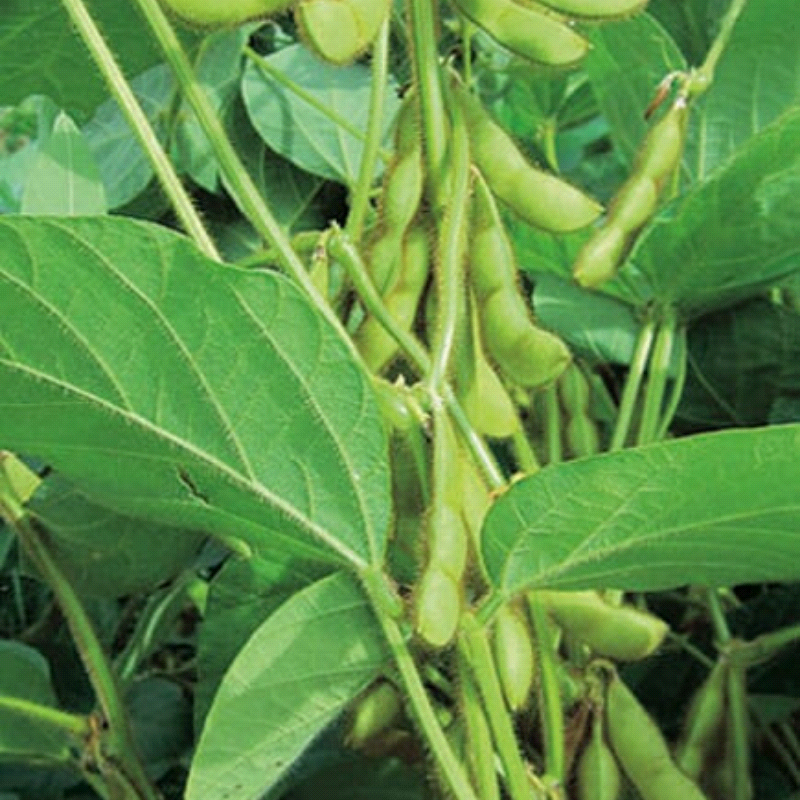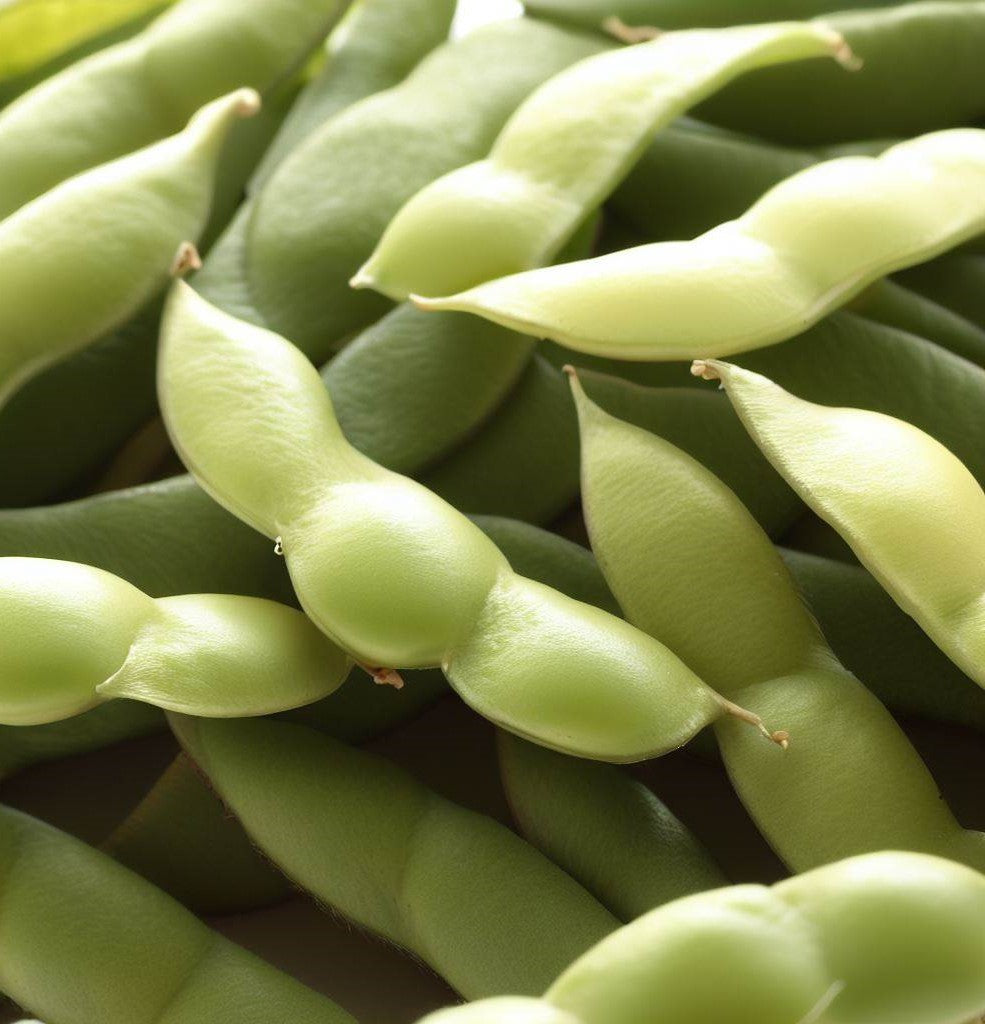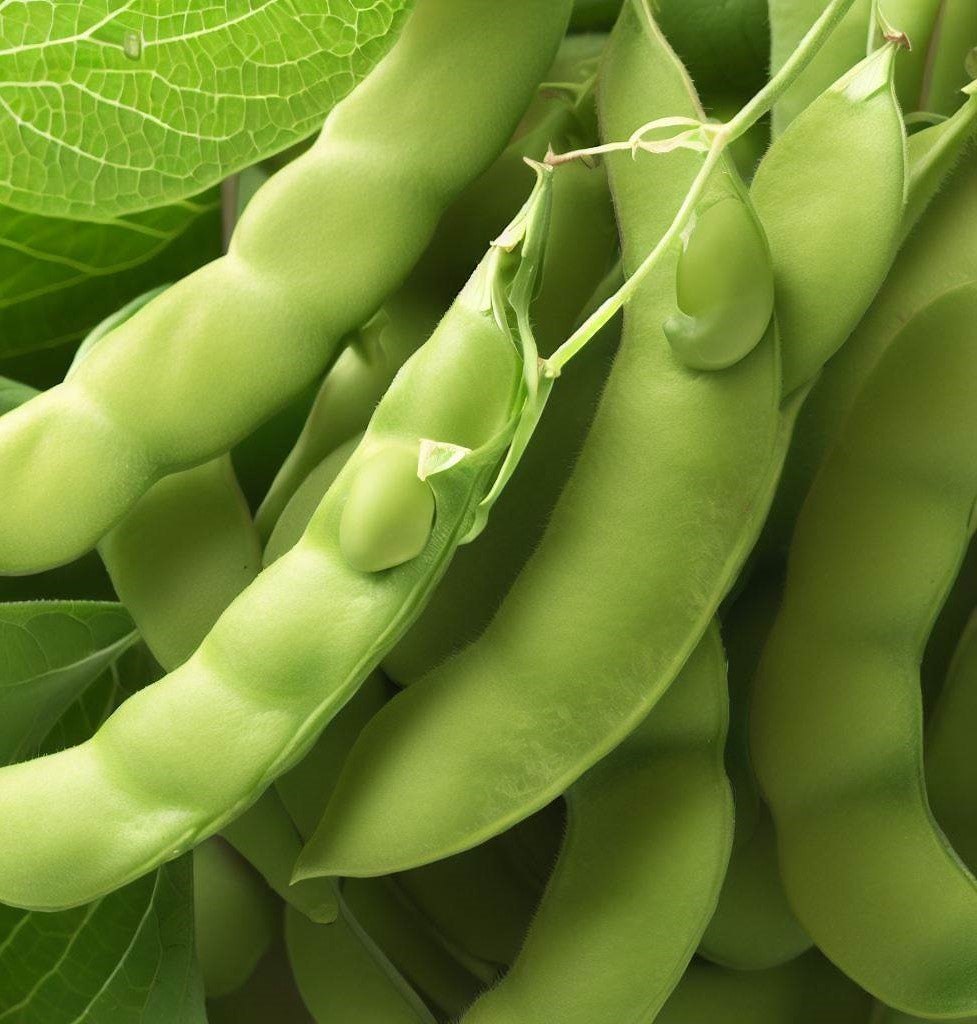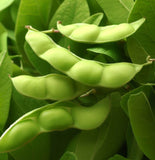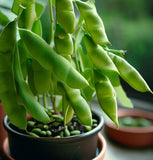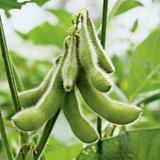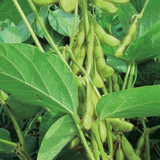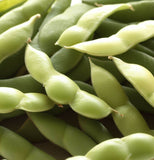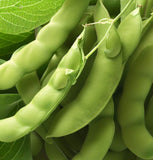Midori Giant, Edamame Bean (Glycine max)
Midori Giant, Edamame Bean (Glycine max) is a variety of Glycine max, which is the species of soybean. Edamame is a popular and nutritious legume that is consumed as a vegetable and is especially well-known in East Asian cuisine. The Midori Giant variety specifically refers to a type of edamame known for its large, plump pods and delicious flavor.
Physical Characteristics: The Midori Giant edamame plants grow as annuals and reach an average height of about 60-90 centimeters (2-3 feet). They have an upright growth habit with sturdy stems and lush foliage. The leaves are trifoliate, consisting of three leaflets, and have a bright green color.
Pods and Beans: The most notable feature of the Midori Giant edamame is its large pods. The pods are typically elongated and slightly curved, ranging in length from 5-8 centimeters (2-3 inches). They have a fuzzy texture and a vibrant green color when young. Inside the pods, the edamame beans are encased in a whitish, fuzzy lining.
Harvesting and Preparation: Midori Giant edamame is harvested when the pods are still green and plump but before they fully mature and harden. The beans inside the pods are harvested when they are still young and tender. The pods can be steamed, boiled, or microwaved to cook the beans, which are then removed from the pods before consuming. Edamame beans have a sweet, nutty flavor and a slightly crunchy texture.
Culinary Uses: Edamame beans are highly versatile and can be used in a variety of dishes. They are commonly boiled or steamed and served as a snack, appetizer, or side dish. Edamame can also be incorporated into salads, stir-fries, rice dishes, and soups. The beans are often seasoned with salt or other spices for added flavor.
Nutritional Value: Midori Giant edamame beans are highly nutritious and are considered a good source of plant-based protein. They are also rich in dietary fiber, vitamins (such as vitamin K and folate), and minerals (including iron, magnesium, and potassium). Edamame beans are low in fat and cholesterol, making them a healthy food choice.
Cultivation: Glycine max, including the Midori Giant variety, is typically grown in warm climates with well-drained soil. Edamame plants require full sun and regular watering. They are often planted in the spring and harvested in late summer or early fall. As legumes, soybeans like edamame have the unique ability to fix nitrogen in the soil, which can benefit the surrounding plants and soil health.
Botanical Name: Glycine Max
Common Name: Midori Giant, Edamame Bean
Size at Maturity: 18″-24″
Days to Maturity: 70-80 Days
Light Requirement: Full Sun / Partial Shade
Planting Time: Fall, after the danger of last frost
Sowing Method: Sow seeds directly into the soil
Planting Depth: 1″
Plant Spacing: 30″
Ships: Year-round
Average Seeds Per Ounce: Approx. 80

